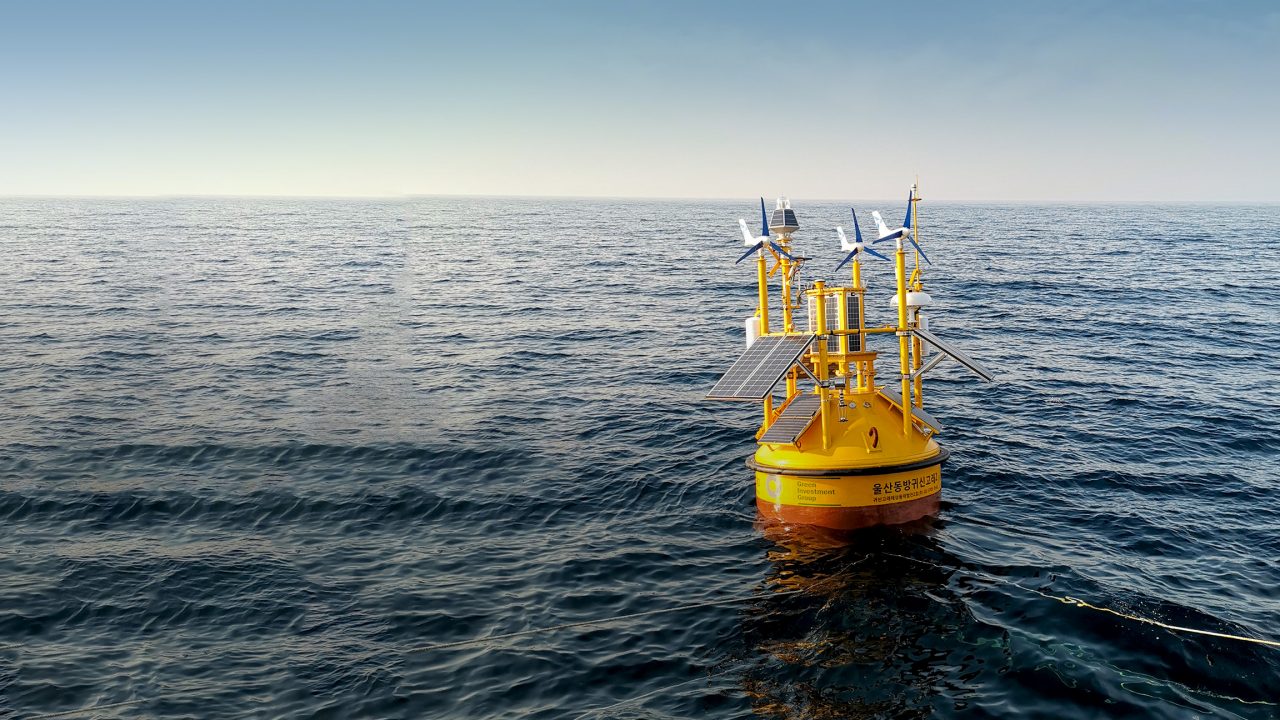

Offshore wind
23 June 2020
floating offshore wind capacity under development
commercial floating LiDAR system installed in Korea
targeted for completion by 2023
Opportunity
South Korea is currently the fourth largest coal importer in the world. Fossil fuel energy accounts for nearly two-thirds of the country’s electricity generation, while the share of nuclear power accounts for almost one-third1.
To reduce the country’s heavy reliance on coal imports and nuclear, the South Korean Government’s RE3020 plan targets an aggressive increase in its green energy power generation goals, from 8-9% to 20% by 2030 and 30-35% by 2040.
The country also aims to have 13 GW of offshore wind installed by 2030. As a global leader in green economy, GIG is opening up new frontiers in Korea, a dynamic market with a significant, yet largely untapped, offshore wind resource.
Woojin Choi
Managing Director of Green Investment Group, Korea
Actions
GIG has set up its first floating offshore wind project in Ulsan, the industrial powerhouse of South Korea. Ulsan is a prime location to develop floating offshore wind projects due to the city’s industry-leading shipyards, maritime expertise and port facilities.
In April 2020, GIG completed the installation of Korea’s first floating LiDAR. The LiDAR will collect critical wind resource data relating to wind speed and direction, and help address the project’s impact on the surrounding environment and ecosystem.
During this early development phase, we are actively seeking the participation of local communities, stakeholders and academics to maximise positive economic and environmental impact. Korea Maritime University, Zen Limited and Vision Plus are currently working with the project, managing the design, stability testing, installation and operations of the floating LiDAR Bouy systems for offshore wind measurement.
We have also joined forces with Energy Infra Asset Management, a USD$1.6 billion Korean renewable energy fund manager, to support the financing of the Ulsan offshore wind project.
Impact
While floating LiDAR systems are commonly used across Europe and other advanced offshore wind markets, this is first time it has been used in Korea for a commercial offshore wind farm.
The Ulsan floating offshore wind project will now undergo a two-year wind measurement campaign. The development is being taken forward in three separate phases, with the first phase of 500 MW targeted for development completion in 2023.
This also marks the first floating offshore wind project across GIG’s global pipeline and is a clear demonstration of GIG’s commitment to open up new frontier markets supporting the growth of the global green economy.
The LiDAR will collect wind resource data and its installation marks a critical step in the development of GIG’s first floating offshore wind project in South Korea, located off the coast of Ulsan City.
1. Source: U.S. Energy Information Administration